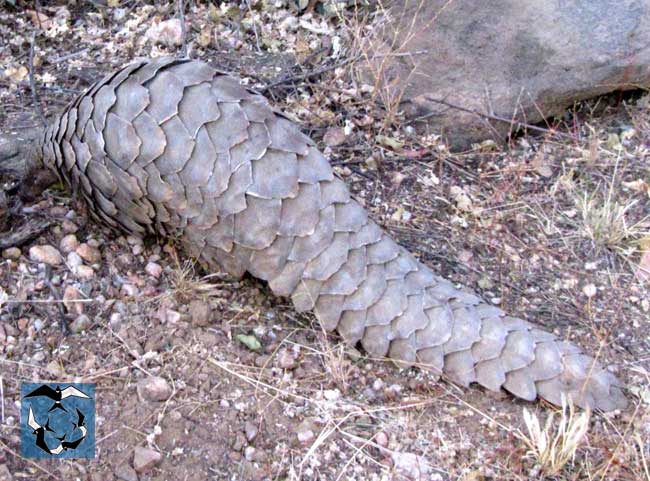![]() International Pangolin Day
International Pangolin Day
[New Era
— 14 February 2013]
 International
awareness days are declared because an issue needs advocacy and awareness.
Saturday the 16th February is International Pangolin Day and the world's
eight species, four in Asia and four in Africa, need protection. Namibia
has only one species, Smutsia temminckii the african ground pangolin,
sometimes called the cape pangolin. We share this species with a number
of other African countries and because of its' widespread occurrence,
Smutsia temminckii is listed as an Appendix 11 “least concern”
species by CITES, the Convention for International Trade in Endangered
Species under the umbrella body of the IUCN (International Union for Conservation
of Nature).
International
awareness days are declared because an issue needs advocacy and awareness.
Saturday the 16th February is International Pangolin Day and the world's
eight species, four in Asia and four in Africa, need protection. Namibia
has only one species, Smutsia temminckii the african ground pangolin,
sometimes called the cape pangolin. We share this species with a number
of other African countries and because of its' widespread occurrence,
Smutsia temminckii is listed as an Appendix 11 “least concern”
species by CITES, the Convention for International Trade in Endangered
Species under the umbrella body of the IUCN (International Union for Conservation
of Nature).
A CITES listing in Appendix 11 means that a CITES permit for both export and import of an animal or any parts of that animal would be needed together with a permit from whichever local national importing or exporting authorities. So, it is with some relief that almost all african countries that have pangolin species have stricter domestic measures within their own national legislation and regulations forbidding any trade in these animals or their parts. However, there are always loopholes and with the demand and supply chain illegal capture, killing and moving of animals or their parts is possible.
In Africa more work has been done with the african ground pangolin than any of the other 3 african species, however, knowledge gaps remain especially concerning distribution and population size. Traditionally our pangolin has been used for food, for various medicinal purposes as well as for luck. In a sparsely populated country such as Namibia , this use was probably sustainable in the past but with global changes in human population size and movement and the possibilities of illegal trade the pangolin is no longer a safe species.
Asia has 4 pangolin species, two of these are CITES listed as endangered and two are listed as threatened. The two endangered species are in fact extinct in a a number of their previous habitats due to the high pressure of illegal trade mostly bound for markets in China. In Asia, as in Africa there are unverified claims on the usefulness of pangolin scales and meat. And as with rhino horn, medicinal claims are fabricated in order to attract buyers especially people suffering illnesses. From investigations in south-east Asia, is believed that the pangolin trade is controlled by only a few syndicates. In recent illegal consignments uncovered in Asia, up to 23 ton of pangolins and pangolin parts, african pangolins have been found. As in the all illegal wildlife trade, the actual poacher is poorly paid compared to the middleman or final seller whose gain may be huge especially when weighed against low punitive measures if they are caught.
Pangolins
are part our heritage, and considering how useful they are in terms of
ant and termite control, they are obviously also a necessary part of a
well functioning ecosystem. Threats to this harmless species include low
electric fences, pesticides, diminishing favorable habitats and poaching.
Biodiversity safety is a serious issue in Namibia and the pangolin is
a species in need of conservation.
 Liz
Komen
Liz
Komen
NARREC